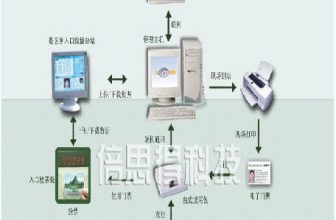
Paperless tickets enter the countdown
[ad_1]
There are less than a hundred days before the implementation date of 100% e-tickets advocated by the International Air Transport Association (IATA). From June 1, 2008, paper tickets will become history.
From 18% to 93%
As part of the simplified business plan, IATA began to implement 100% e-tickets in June 2004. On the one hand, it can make travel and freight more convenient, and on the other hand, it can reduce cost pressure for airlines.
The plan consists of five projects, namely, standard boarding pass barcode (BCBP), universal self-service platform (CUSS), aviation radio frequency identification (RFID), e-ticket and e-freight. According to IATA estimates, these five projects together will bring about $6.5 billion in capital savings to the aviation industry each year.
When the program was launched in June 2004, only 18% of air tickets worldwide were e-tickets. Today, the penetration rate of e-tickets has exceeded 93%. IATA Chairman and CEO Bisignani said: “This is an incredible industry success story. When we first started, the number of paper tickets issued per month exceeded 28 million. Now, we have integrated this worldwide. One number has been reduced to less than 3 million.”
Bisignani said: “The e-ticket is a flagship project to simplify business planning. The processing cost of a paper ticket is US$10, while the electronic ticket can reduce this cost to US$1. That alone, aviation The industry will save more than 3 billion U.S. dollars each year. There is no better win-win proposal than this.”
my country’s e-ticket was pioneered by China Southern Airlines in 2000, and now all major domestic airlines have launched e-tickets. E-tickets are not subject to time and location restrictions, and the ability to order, endorse, change, and refund tickets through the Internet has been accepted and respected by the majority of passengers. In November last year, the International Air Transport Association stopped issuing international paper tickets to our country’s ticket agents, and our country’s e-ticket rate has reached 100%.
Challenges remain
However, to complete the global goal of 100% e-tickets, there are still greater challenges. According to a person from IATA, the penetration rate of e-tickets in Africa is 83%, and that of MENA is 84%. The real problem comes from Russia and the Commonwealth of Independent States. Although the governments of Russia and the Commonwealth of Independent States have revised their legislation to allow the use of e-tickets, due to the late start, the local e-ticket penetration rate is only 54%.
Bisignani revealed: “These regions together account for 8% of the total global aviation. IATA’s 150 experts are working with airlines in these regions to quickly narrow the gap.”
However, Bisignani is still full of confidence in completing the 100% e-ticket plan as scheduled. He believes that if we can bring the convenience of e-tickets to airports on small islands that are remote and even without electricity, then through the final stage of efforts, the 100% e-ticket plan will surely succeed.
In the electronic world, 100% use of e-tickets will make it easier for consumers to travel, and there will no longer be the problem of lost air tickets. It will be easy to change routes and provide a variety of self-service options.
Bisignani said: “We have seen the effect of e-tickets. The number of check-in procedures through the Internet and self-service terminals has reached an unprecedented high, and even the newly launched mobile check-in service is rapidly spreading. IATA is passing The Fast Travel project will simplify business planning to the next stage. The Fast Travel project will bring a variety of self-service options to simplify the entire travel process from booking to arrival.”
[ad_2]




